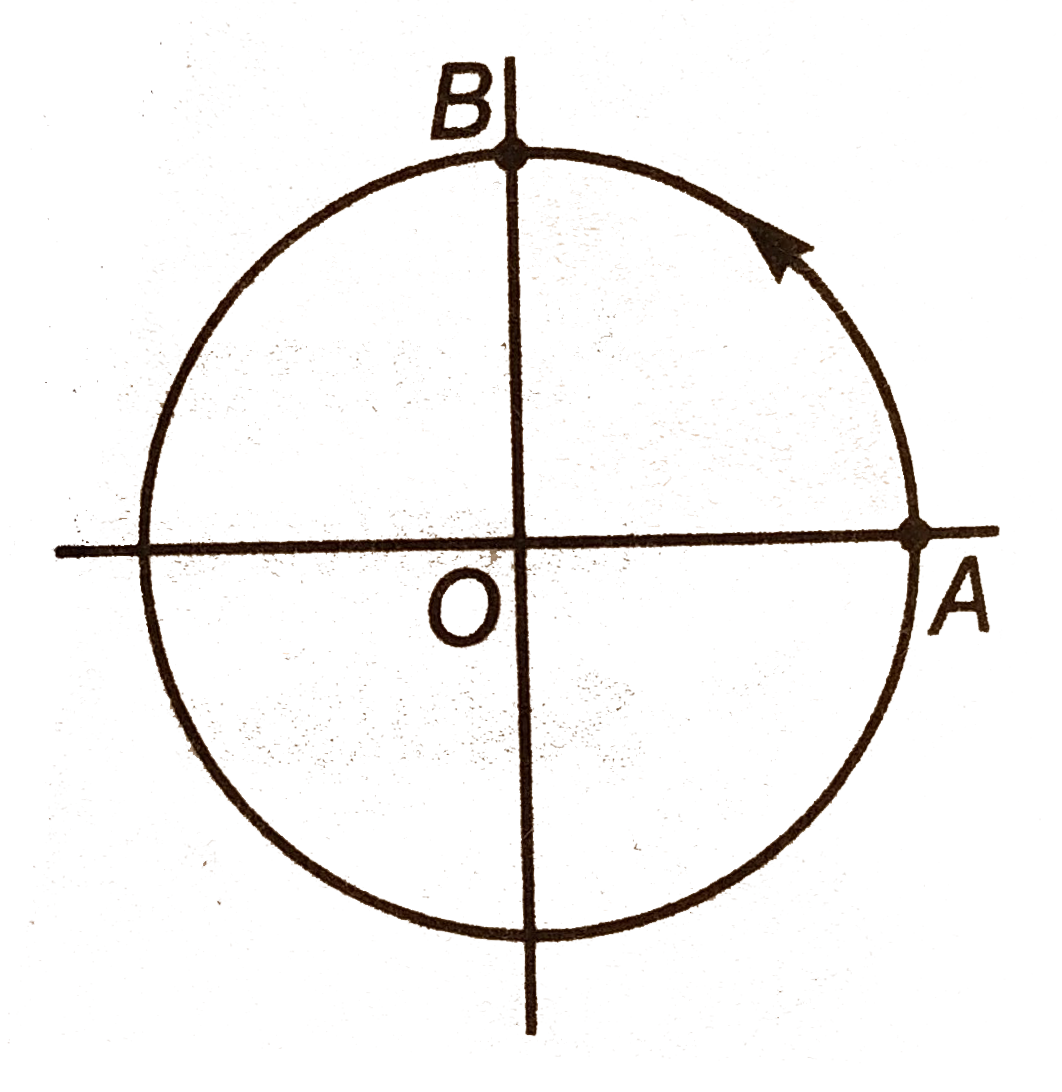Assertion:− A particle having zero acceleration must have constant speed.
Reason :− A Particle having constant speed must have zero acceleration.
If both Assertion & Reason are True & the Reason is a correct explanation of the Assertion.
If both Assertion & Reason are True but Reason is not a correct explanation of the Assertiion.
If Assertion is True but the Reason is False.
If both Assertion & Reason are False
The correct Answer is:C
To solve the question regarding the assertion and reason given, we will analyze both statements step by step.
1. Understanding the Assertion:
- The assertion states that "A particle having zero acceleration must have constant speed."
- Acceleration is defined as the rate of change of velocity with respect to time, mathematically given by a=dvdt.
- If acceleration a=0, it implies that dvdt=0. This means that the velocity v does not change over time.
- Therefore, if there is no change in velocity, the particle must be moving at a constant speed.
- Conclusion: The assertion is true.
2. Understanding the Reason:
- The reason states that "A particle having constant speed must have zero acceleration."
- Constant speed means that the magnitude of the velocity is constant; however, velocity is a vector quantity and includes both magnitude and direction.
- A classic example is uniform circular motion, where a particle moves with constant speed but changes direction continuously.
- In this case, even though the speed is constant, the direction of the velocity vector changes, which means there is an acceleration (centripetal acceleration) acting on the particle.
- Therefore, it is not accurate to say that constant speed implies zero acceleration.
- Conclusion: The reason is false.
3. Final Evaluation:
- Since the assertion is true and the reason is false, the correct answer is that the assertion is true but the reason is false.
Final Answer:
- The correct option is: Assertion is true, Reason is false (Option C).
- The assertion states that "A particle having zero acceleration must have constant speed."
- Acceleration is defined as the rate of change of velocity with respect to time, mathematically given by a=dvdt.
- If acceleration a=0, it implies that dvdt=0. This means that the velocity v does not change over time.
- Therefore, if there is no change in velocity, the particle must be moving at a constant speed.
- Conclusion: The assertion is true.
- The reason states that "A particle having constant speed must have zero acceleration."
- Constant speed means that the magnitude of the velocity is constant; however, velocity is a vector quantity and includes both magnitude and direction.
- A classic example is uniform circular motion, where a particle moves with constant speed but changes direction continuously.
- In this case, even though the speed is constant, the direction of the velocity vector changes, which means there is an acceleration (centripetal acceleration) acting on the particle.
- Therefore, it is not accurate to say that constant speed implies zero acceleration.
- Conclusion: The reason is false.
- Since the assertion is true and the reason is false, the correct answer is that the assertion is true but the reason is false.
- The correct option is: Assertion is true, Reason is false (Option C).
Topper's Solved these Questions
- TEST PAPERBOOK - ALLENCHAPTER - TEST PAPEREXERCISE - Exercise (Physics)
330 Videos
- TEST PAPERBOOK - ALLENCHAPTER - TEST PAPEREXERCISE - PHYSICS
4 Videos
- SIMPLE HARMONIC MOTIONBOOK - ALLENCHAPTER - SIMPLE HARMONIC MOTIONEXERCISE - Example
1 Videos
- TEST PAPER 1BOOK - ALLENCHAPTER - TEST PAPER 1EXERCISE - PHYSICS
11 Videos
Similar Questions
A particle is moving on a circular path with constant speed, then its acceleration will be constant in
View SolutionAssertion :− A particle has positive acceleration it means that its speed always increases.
Reason :−Acceleration is the rate of change of speed with respect to time.
View SolutionAssertion: A particle follows only a parabolic path if acceleration is constant.
Reason : In projectile motion path is parabolic, as acceleration is assumed to be constant at low heights.
View SolutionCan an object accelerate if is speed is constant?
View SolutionCan a particle have a constant velocity and varying speed ?
View SolutionAssertion : We know the relation a=v.dvds . Therefore, if velocity of a particle is zero, then acceleration is also zero.
Reason : In the above equation, a is the instantaneous acceleration.
View SolutionAssertion: A particle is rorating in a circle with constant speed as shown. Between point A and B , ratio of average acceleration and average velocity is angular velocity of particle about point O .
Reason: Since speed is constant, angular velocity is also constant.

View SolutionSTATEMENT -1 : In non - uniform circular motion acceleration of a particles is along the tangent of the circle .
STATEMENT -2 : In uniform circular motion acceleration of a particle is zero .
STATEMENT -3 : In no - uniform circular motion acceleration of a particle is towards the centre of the circle.
View SolutionAssertion: A charged particle is moving in a circle with constant speed in uniform magnetic field. If we increase the speed of particle to twice, its acceleration will become four times.
Reason: In circular path of radius R with constant speed v, acceleration is given by v2R
View SolutionAssertion: A frame moving in a circle with constant speed can never be an inertial frame.
Reason: It has a constant acceleration.
View Solution
